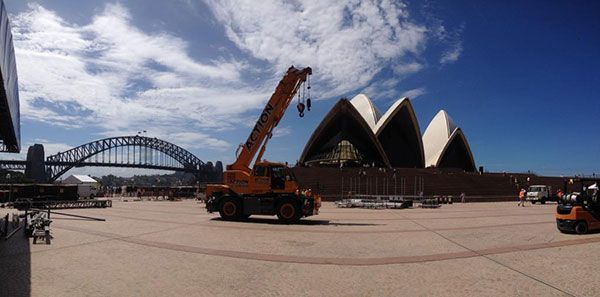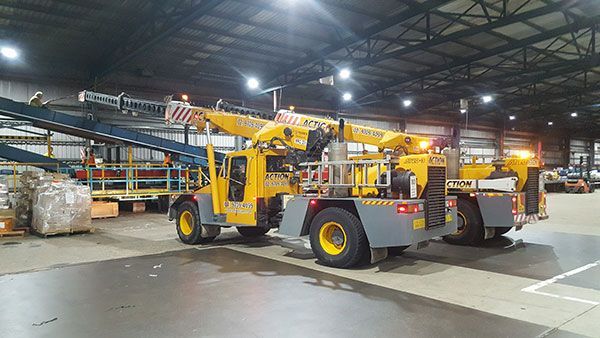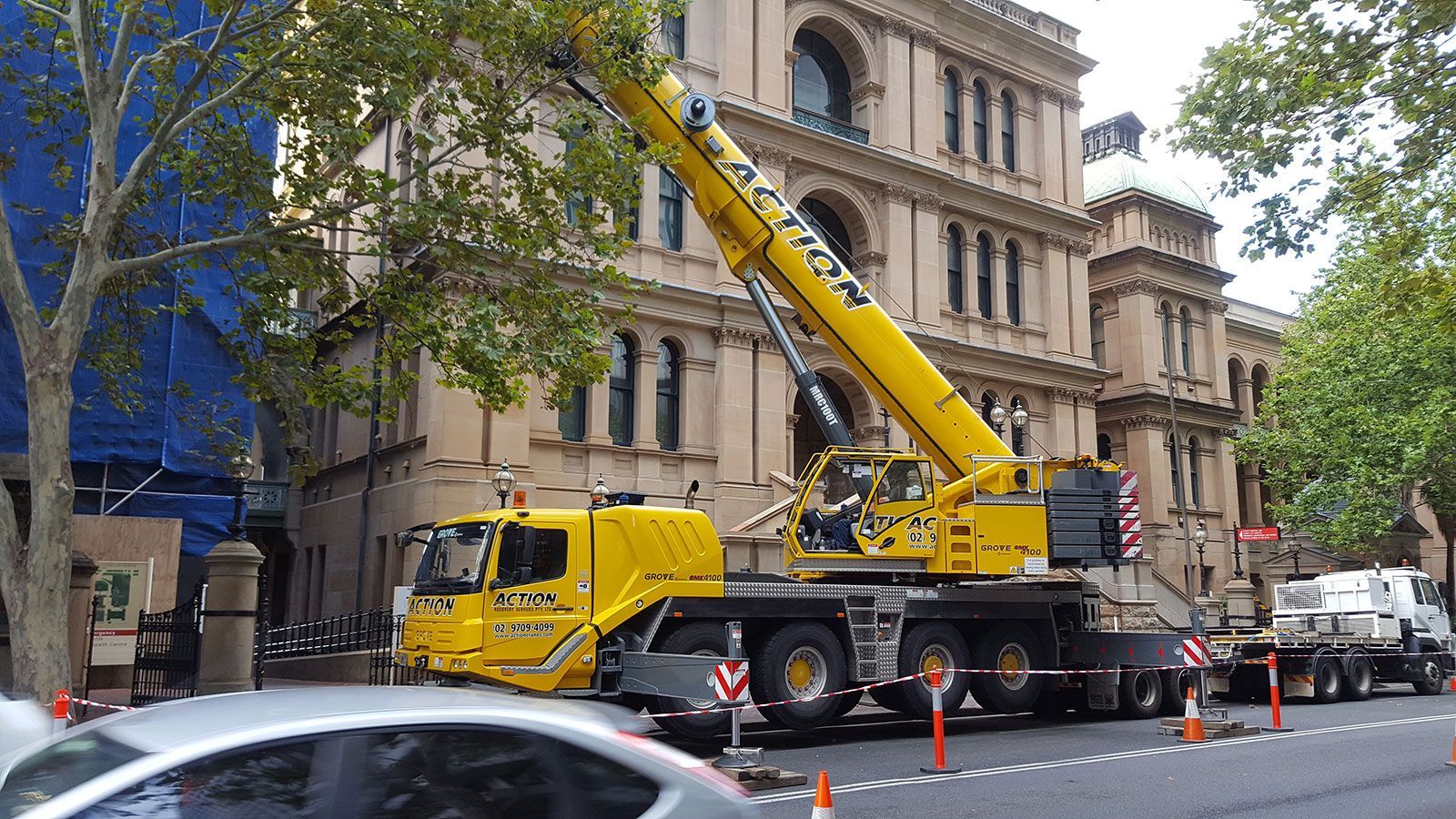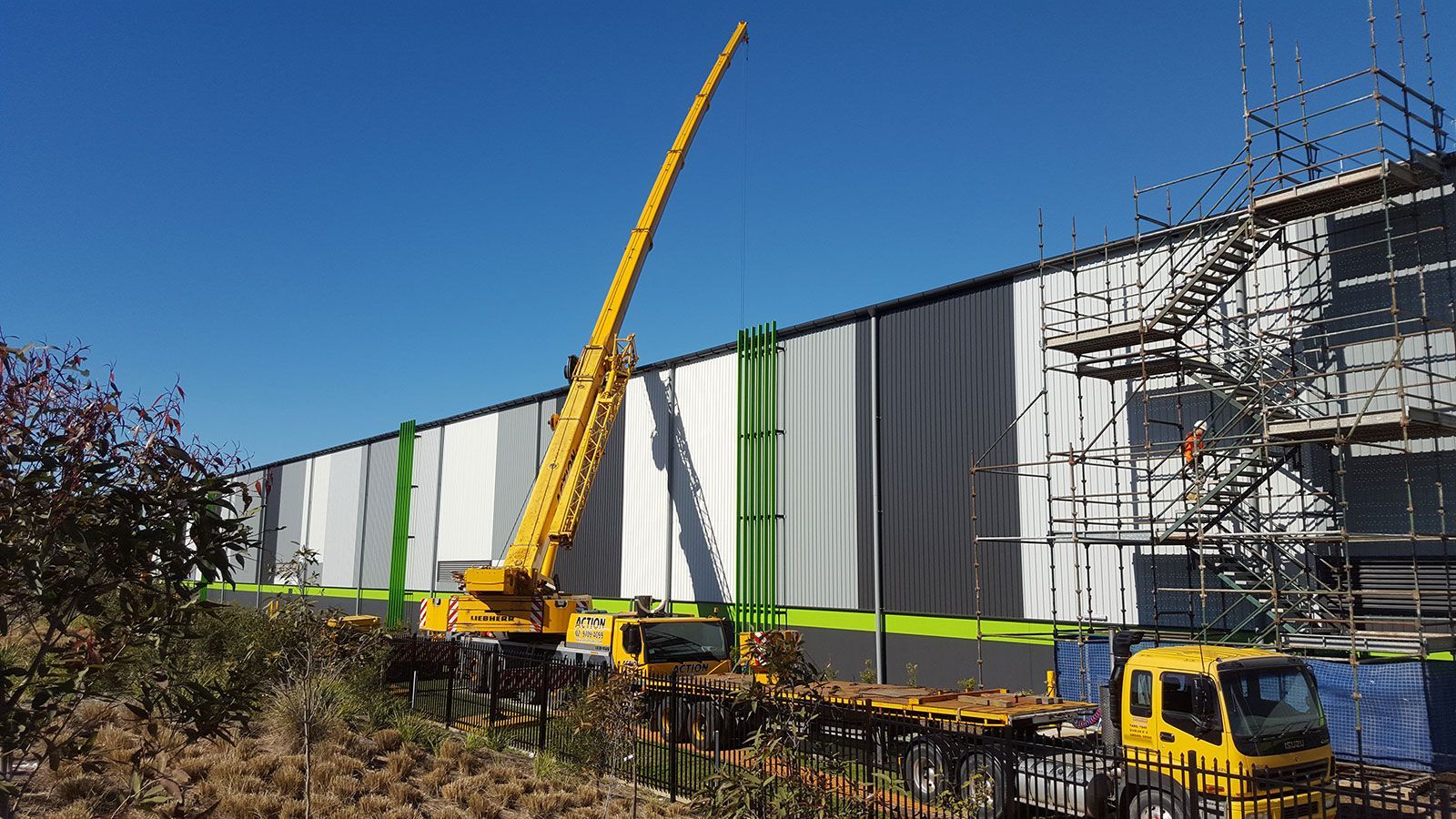An education in elevation – a beginner’s guide to mobile cranes
Learning the difference between a boom and a bird
Cranes, at some point in your life you’ve probably seen one. Whether it was looming over an incomplete skyscraper or construction site, parked up on a roadside and potentially blocking your route to work, or even flying through the sky – no wait, that’s the wrong kind of crane.
Dating back as far as Ancient Greece, cranes are one of the most important pieces of machinery in the construction industry. Broken down to their most basic function, cranes lift things - heavy things. These feats of lifting are achieved mechanically by using a long arm - known in the industry as a boom - that acts like a lever. With counterweights or hydraulics generating the necessary force, it allows for an object to be pulled up by a length of cable.
Modern day cranes generally fall under two categories – Fixed cranes and mobile cranes. At Action Cranes, we offer a comprehensive mobile crane hire service and, as such, it is the mobile variety of crane which we will be taking a more in-depth look at.
Our cranes are mobile, just like your phone
Compact and able to independently transit between locations, mobile cranes were once limited to light lifting jobs. But with technological advances, mobile cranes are now capable of carrying out heavy lifts with weight ranges anywhere up to 130 tonnes. A feature that has since made them the most popular crane hire option across Australia.
The flexibility of mobile cranes is wide ranging, allowing them to access and operate in tighter spaces that would otherwise be inaccessible to traditional fixed cranes. They have a practical set-up system that can be carried out in minimal time and their road-worthy abilities ensure they can travel across large sites as well as between multiple site locations. The transit possibilities of a mobile crane can allow projects to save on overall machinery requirements while optimising the usable space around their build.
The essentials that create a mobile crane
Although there are many mobile crane manufacturers in the market, there are several key components that generally comprise most mobile cranes.
Operator’s cabin
This is the control centre for crane operations. It’s imperative that the operator’s cabin allows for optimum visibility of the crane’s overall range of motion. Some models of mobile crane even combine the operator’s cabin with the driver’s cab to cut down on the overall circumference of the rig. Some manufacturers will enable the operators to rotate or swivel the cabin from left to right or, in some cases, telescope it vertically.
The boom
You may recall that we touched upon the boom earlier and, as we mentioned, it’s the term given to the long arm that carries out all the lifting and movements of the load. A boom can comprise a single solid piece or can be constructed to telescope, providing a greater reach capacity to the crane.
Hoist and hook
The hoist generally sits at the base of the boom and is one of the more important components of a crane’s functionality. As the device that performs the actual vertical lifting, the hoist runs the cable that holds the hook and other crane attachments.
Hydraulic pump
For parts of a mobile crane that utilise hydraulic pressure to carry out the lifting and movement of heavy loads, the hydraulic pump is the component that provides the necessary pressure in order for those systems to operate effectively.
Outriggers and counterweights
Weight distribution is key to a lift being carried out successfully. Mobile cranes are fitted with both outriggers and counterweights to offset the weight of the lifted load and ensure that the crane does not topple over. Outriggers are generally placed strategically along the sides of the crane and serve to balance the weight distribution evenly while the counterweights place additional weight on the opposite side of the load.
We have a mobile crane that is just your type
With the popularity and development of mobile cranes across the construction industry the need for a variety in the range of mobile crane types emerged. Whilst all can perform the standard task of lifting, each type has been engineered with key differences that set them apart. See our range of mobile cranes here.
City crane
When size matters, the city crane is a premier mobile crane hire solution. With adjustable turning circles and telescopic booms, city cranes can navigate tight access construction sites whilst still providing an ample load capacity and hoisting height.

Franna crane
Australian ingenuity at its finest, the franna crane is the brainchild of Dave Francis. The key feature of the franna is its ability to taxi a load from one position to another. While this does come with lift and stability limitations, for project sites it remains the most efficient way to move loads without the need for multiple set-ups.

All terrain crane
Boasting an all-wheel drive system, all-terrain cranes are purpose built to handle varied ground and weather conditions with the ability to reach remote sites and those with no road access. Our range of all-terrain cranes for hire have a heavy lifting capacity of up to 130 tonnes which makes them an incredibly versatile option for a range of construction and industrial applications.

Mobile Cranes – the undisputed champion
If you would like to learn more about mobile cranes and how they can be put to use on your next construction project, get in touch with the Action Cranes team by calling (02) 9054 5244.

